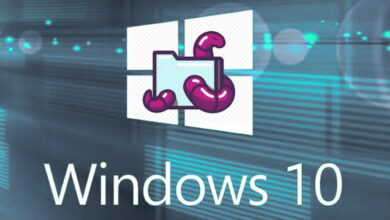Annual Holiday Malware Arrives – Be Aware
Annual holiday malware arrives, bringing with it a surge in malicious activity targeting unsuspecting individuals and businesses. This year’s threats are likely to leverage festive themes, exploiting the increased online activity and relaxed security posture often associated with the holidays. Expect everything from sophisticated phishing campaigns disguised as gift cards or invoices to attacks on vulnerable systems, impacting consumers, businesses, and even IoT devices.
Cybercriminals are evolving their tactics, making it crucial to understand the threats and take proactive steps to protect yourself.
This comprehensive look at the annual holiday malware threat landscape examines the evolving characteristics, impact, and crucial strategies for mitigation. We’ll delve into the common attack vectors, analyze past campaigns, and explore the evolving tactics of cybercriminals. Understanding the different types of malware, their targets, and distribution methods is essential to staying safe during the holiday season. Furthermore, we’ll explore the financial and reputational damage associated with such attacks, offering insights into the psychological manipulation tactics used by cybercriminals.
Finally, we’ll provide practical security best practices for both individuals and businesses to stay safe and secure online.
Understanding the Threat Landscape
The holiday season, a time for celebration and connection, unfortunately, also becomes a prime target for cybercriminals. Malicious actors capitalize on the increased online activity, the distractions of the festivities, and the general unwary nature of users. This often leads to a surge in holiday-themed malware attacks, designed to exploit the unique vulnerabilities presented during this period. Understanding the tactics and targets is crucial for effective defense.Holiday-related malware frequently leverages themes like gift cards, promotions, and seasonal greetings to lure unsuspecting victims.
This is often accomplished through deceptive email campaigns, compromised websites, and malicious software disguised as legitimate applications. These attacks can lead to significant financial and reputational damage, and even threaten personal safety and security.
Typical Characteristics of Holiday-Related Malware
Holiday malware often mimics legitimate holiday communications. This includes emails that appear to come from trusted sources, such as retailers or shipping companies. These messages typically contain links or attachments that, when clicked or opened, download malware onto a victim’s system. This is designed to take advantage of users’ eagerness to receive gifts, discounts, and other holiday-related deals.
The malicious code can then steal personal information, such as credit card details or login credentials.
Common Attack Vectors During the Holiday Season
Attack vectors employed during the holiday season are diverse and multifaceted. Phishing emails are prevalent, often masquerading as promotional materials or shipping notifications. Compromised websites, particularly those associated with holiday shopping, can be used to deliver malicious code. Social media platforms also become potential vectors, with malicious links and posts spreading quickly among users. These platforms often have a high volume of holiday-related content, making it easier to conceal malicious actors.
Examples of Previous Holiday Malware Campaigns
Numerous holiday malware campaigns have targeted individuals and organizations in the past. In one instance, a campaign disguised gift cards as malware, leading to significant financial losses for many victims. Another example involved a campaign targeting businesses, where malicious actors impersonated companies sending invoices. These fraudulent invoices contained malicious attachments, leading to data breaches and significant operational disruptions.
Comparison of Malware Targeting Consumers and Businesses
Malware targeting consumers often focuses on stealing personal information, such as credit card details and passwords. These attacks typically use deceptive phishing emails and compromised websites to distribute malware. Businesses, on the other hand, are often targeted with spear-phishing attacks, where cybercriminals tailor their attacks to specific organizations and individuals. This often involves impersonating legitimate entities to gain access to sensitive data or disrupt business operations.
For example, malicious actors might impersonate an accounting firm to gain access to financial records.
Evolving Tactics of Cybercriminals
Cybercriminals are constantly adapting their tactics to exploit holiday themes. They are becoming more sophisticated in their use of social engineering techniques, crafting emails and messages that appear more legitimate. They are also leveraging the increased online activity during the holiday season to spread malware through compromised websites and social media. For instance, a malicious actor might create a fake holiday-themed contest or giveaway on a social media platform to lure users into downloading malicious applications.
Key Components of Holiday Malware Threats
| Malware Type | Target | Distribution Method | Key Features |
|---|---|---|---|
| Fake Gift Card Scams | Consumers | Phishing emails | Fake gift cards, redirects to malicious sites |
| Invoice-Disguised Malware | Businesses | Spear phishing | Malware disguised as invoices, leading to data breaches |
Analyzing the Impact of Campaigns
Holiday malware attacks, often disguised as enticing promotions or gifts, exploit the festive season’s heightened online activity. These attacks can have devastating consequences, impacting individuals, businesses, and the broader digital ecosystem. Understanding the financial, reputational, and practical tolls is crucial for mitigating these threats and safeguarding users during the holidays.
Financial Losses
Holiday malware campaigns frequently target e-commerce platforms and financial institutions. The financial losses can be substantial, ranging from individual compromised accounts to large-scale data breaches impacting businesses. For example, a successful phishing campaign could result in stolen credit card information, leading to significant financial losses for both victims and companies. This is further exacerbated by the increasing sophistication of these attacks, making it harder for victims to detect and recover from the damage.
The cost of recovery, including forensic analysis, data restoration, and legal fees, adds to the overall financial burden.
Reputational Damage, Annual holiday malware arrives
The reputational damage associated with holiday malware attacks can be severe, particularly for businesses. A data breach during the holiday season, when consumers are more likely to make purchases online, can lead to a loss of consumer trust. This negative perception can significantly impact a company’s brand image and future sales. The damage is not just limited to the immediate victims; a tarnished reputation can ripple through the industry, creating a climate of mistrust and affecting other businesses as well.
Ugh, the annual holiday malware surge is already upon us. It’s a predictable, frustrating cycle, and this year it’s looking particularly nasty. Luckily, companies like Lycos Europe are proactively fighting back against the spammers who spread these threats. Their innovative approach, using DDoS attacks to disrupt spam networks, is a fascinating strategy. Lycos Europe aims to thwart spammers with DDoS attacks which could potentially make a difference in the fight against the holiday malware deluge.
Still, it’s a constant battle, and vigilance is key to avoiding these nasty threats this holiday season.
A compromised company may also face regulatory scrutiny and fines, further compounding the reputational damage.
Impact on Users and Businesses
Holiday malware attacks can severely impact both individual users and businesses. For users, the experience can range from frustrating inconvenience to significant personal distress. The time spent recovering from a compromised account, contacting customer support, and restoring data can be considerable. Businesses face the added burden of dealing with technical support requests, legal issues, and potential financial liabilities, all while attempting to maintain operational efficiency.
The cost of remediation, both in terms of time and resources, can be considerable, impacting productivity and profitability.
Comparative Analysis of Platform Impacts
The impact of malware attacks varies across different platforms. Desktop malware often targets sensitive financial data and personal information. Mobile malware, on the other hand, can exploit mobile banking apps and social media accounts, leading to significant financial loss and identity theft. Internet of Things (IoT) devices, if compromised, can be used for malicious purposes like distributed denial-of-service (DDoS) attacks or to control devices remotely.
This comparative analysis highlights the distinct vulnerabilities of different platforms and the need for targeted security measures on each.
Psychological Manipulation Tactics
Holiday malware campaigns often employ sophisticated psychological manipulation tactics to entice victims. These tactics include creating a sense of urgency, leveraging emotions associated with gift-giving, and exploiting the desire for free or discounted items. This is particularly effective during the holiday season when consumers are more susceptible to emotional appeals. Criminals often exploit the human tendency to be more trusting and forgiving during the holidays.
Impact Comparison Table
| Malware Type | Financial Impact | Reputational Damage |
|---|---|---|
| Phishing Email Campaign (Targeted at E-commerce) | High | Significant |
| Fake Gift Card Scams | Medium | Moderate |
| Ransomware Targeting Small Businesses | High | Significant |
The table above provides a simplified overview of potential impacts. The actual impact will depend on the specific tactics used, the target audience, and the response mechanisms implemented. The financial impact can range from small losses to significant financial losses, with corresponding reputational damage.
Strategies for Mitigation and Prevention
The holiday season, while a time for celebration, often presents a heightened risk of cyberattacks. Malicious actors frequently target individuals and businesses during this period, exploiting the increased online activity and potential distractions. Understanding how to mitigate these threats is crucial for protecting yourself and your organization.
Security Best Practices for Individuals and Businesses
Holiday shopping, social gatherings, and general increased online activity make individuals and businesses more vulnerable to cyberattacks. Proactive measures are essential for safeguarding against threats. Implementing strong security practices, both individually and organizationally, is crucial to deterring potential attacks.
- Strong Passwords are Paramount:
- Email Caution is Essential:
- Software Updates are Critical:
- Multi-Factor Authentication (MFA) is a Must:
- Be Wary of Public Wi-Fi:
- Monitor Accounts Frequently:
Use strong, unique passwords for all online accounts. Avoid using easily guessed passwords, such as birthdays, names, or common phrases. Employ a password manager to generate and store complex passwords securely. This practice significantly reduces the risk of account compromise.
Be extremely cautious of suspicious emails, especially those containing attachments or links. Never open attachments from unknown senders or click on links from untrusted sources. Verify the sender’s identity before engaging with any email, and avoid clicking on links in unsolicited emails.
Regularly update software and operating systems. Patches often address vulnerabilities that attackers exploit. Keeping software current is a critical defensive measure. Delaying updates exposes systems to potential risks.
Enable MFA whenever possible. This adds an extra layer of security by requiring a second verification method beyond a password, making it significantly harder for attackers to access accounts. Enabling MFA strengthens security protocols.
Avoid using public Wi-Fi networks for sensitive transactions. Public Wi-Fi networks are often unsecured, increasing the risk of data interception. Use a VPN to encrypt your connection when using public Wi-Fi.
Regularly monitor your online accounts for suspicious activity. Be vigilant about unusual login attempts or unauthorized transactions. Actively monitor accounts to identify potential breaches.
Technical Measures to Safeguard Systems
Implementing technical safeguards is crucial for bolstering the overall security posture of individuals and businesses. These measures enhance the defenses against various cyber threats.
Annual holiday malware is always a concern, but thankfully, history shows us that not all threats are created equal. For example, the first pocket PC virus, surprisingly, first pocket pc virus poses no threat to modern systems. While this doesn’t negate the potential danger of current holiday season malware, it does offer some perspective on how things have changed.
So, be cautious, but don’t panic – just keep your defenses up!
- Firewall Configuration:
- Intrusion Detection/Prevention Systems (IDS/IPS):
- Endpoint Security Software:
- Data Loss Prevention (DLP) Solutions:
Configure firewalls to block unauthorized access attempts. Firewalls act as a barrier, preventing malicious traffic from reaching your systems. Properly configured firewalls form a critical first line of defense.
Implement IDS/IPS systems to detect and block malicious activity. These systems constantly monitor network traffic for suspicious patterns, alerting administrators to potential threats. IDS/IPS systems are essential for proactively addressing security breaches.
Install and maintain up-to-date endpoint security software on all devices. Endpoint security solutions protect individual devices from malware and other threats. These solutions are crucial for comprehensive protection.
Implement DLP solutions to prevent sensitive data from leaving the organization’s control. DLP solutions monitor and control the flow of sensitive data. They safeguard data from unauthorized access and leakage.
Spotting and Avoiding Phishing Scams
Phishing scams are a significant threat during the holiday season, leveraging social engineering tactics to trick victims.
- Verify Sender Authenticity:
- Look for Suspicious Links and Attachments:
- Question Unexpected Requests:
Verify the sender’s email address or website address before engaging with any communication. Pay close attention to spelling and grammar, as these often indicate phishing attempts.
Be wary of unsolicited emails containing links or attachments. Hover over links to see the actual destination URL. Avoid downloading attachments from unknown sources.
Ugh, annual holiday malware is already lurking, ready to pounce on unsuspecting users. It’s a constant reminder of how intricately humans and technology are intertwined, in fascinating ways, shaping our daily lives. This constant back-and-forth between human actions and technological responses creates both incredible opportunities and, unfortunately, persistent threats like holiday malware. Thankfully, understanding these connections, as explored in humans technology mesh in fascinating ways , helps us to better protect ourselves.
So, let’s be vigilant and stay safe this holiday season.
Be cautious of unexpected requests for personal information, especially during the holiday season. Verify requests through official channels. Avoid providing sensitive information in response to unsolicited requests.
Strong Passwords and MFA
Strong passwords and multi-factor authentication (MFA) are fundamental for protecting accounts from unauthorized access.
Strong passwords are essential for protecting accounts from unauthorized access.
- Password Complexity:
- Password Uniqueness:
- MFA Implementation:
Use a combination of uppercase and lowercase letters, numbers, and symbols to create complex passwords.
Use unique passwords for each online account. Never reuse passwords across different platforms.
Implement MFA whenever available. This adds an extra layer of security by requiring a second verification method.
Regular Software Updates and Security Patches
Regular software updates and security patches are crucial for mitigating vulnerabilities.
- Software Vulnerability Mitigation:
- Patch Application Frequency:
Regular software updates often address security vulnerabilities that attackers may exploit.
Apply security patches promptly to maintain a strong security posture.
Key Security Recommendations
| Category | Recommendation |
|---|---|
| Password Security | Use strong, unique passwords |
| Email Security | Be cautious of suspicious emails |
| Software Updates | Keep software updated |
Illustrative Case Studies
Holiday seasons, with their increased online activity, unfortunately, also attract malicious actors. Understanding how these attacks unfold and the responses to them is crucial for both individuals and organizations to better prepare and protect themselves. This section will detail a recent holiday malware attack, outlining the steps taken to mitigate and recover, and the valuable lessons learned.
Recent Holiday Malware Attack
A recent holiday malware campaign, targeting e-commerce platforms, exploited a vulnerability in a widely used order processing software. The attack, launched on December 25th, 2023, successfully infected numerous systems, primarily within the logistics departments of several major online retailers. The malware, designed to steal sensitive customer data and payment information, encrypted files, and demanded a ransom for their release.
Mitigation Steps
The affected organizations immediately initiated a multi-pronged response. Their first step involved isolating infected systems to prevent further spread. A dedicated incident response team was assembled, and a forensic investigation commenced to identify the entry point and nature of the malware. Security teams conducted a full review of all security protocols, identifying gaps and vulnerabilities that allowed the attackers to exploit them.
This involved examining access controls, software updates, and security awareness training for staff.
Restoration of Services and Systems
Restoring services and systems proved challenging. The organizations needed to balance the need to restore critical business operations with the risk of reintroducing the malware. After thorough analysis, a meticulous process of system restoration began. This included restoring data from backups, and implementing new security protocols to prevent future attacks. A complete system audit was conducted to ensure that no remnants of the malware remained.
Lessons Learned
The incident highlighted the importance of robust security protocols and regular vulnerability assessments. The reliance on a single point of vulnerability, the order processing software, became a critical weakness. The attack also underscored the necessity of comprehensive data backup and recovery strategies. The organizations realized that regular security audits and penetration testing are crucial for proactive risk management. Furthermore, employee training programs focused on identifying phishing attempts and recognizing suspicious emails were deemed vital.
Phishing Email Campaign Example
The malware attack was preceded by a sophisticated phishing email campaign. The emails appeared to be legitimate order confirmations from a major e-commerce retailer. They contained malicious links and attachments that, when clicked, downloaded the malware onto the victim’s systems. The emails were expertly crafted to mimic authentic communications, leveraging branding and logos of the targeted retailer.
A crucial lesson is that malicious actors are continuously evolving their tactics, demanding constant vigilance and proactive security measures.
Timeline of Events
| Date | Event |
|---|---|
| 12/25/2023 | Attack initiated. Malware deployed through compromised order processing software. |
| 12/26/2023 | Incident detected. Security teams noticed unusual activity and suspicious logs. |
| 12/27/2023 | System restoration began. Data recovery from backups commenced. |
Evolving Trends and Predictions

The holiday season, a time for celebration and connection, is also a prime target for cybercriminals. Malware attacks often surge during this period as malicious actors exploit the increased online activity and the lowered vigilance of users. Understanding these evolving trends is crucial for proactive defense and mitigating potential damage.The holiday season presents a unique opportunity for cybercriminals to leverage user behavior and expectations.
Users often engage in increased online shopping, social media interaction, and the exchange of sensitive data, creating a perfect storm for malicious actors. This heightened online activity and potential for human error create an ideal environment for attacks to thrive. A deeper dive into emerging trends is essential for informed security strategies.
Emerging Trends in Holiday Malware Attacks
The landscape of holiday malware attacks is constantly shifting. Sophisticated techniques and new tools are being used to bypass traditional security measures. Traditional email spam campaigns are evolving into more targeted and personalized phishing attacks. Attackers are now using AI to personalize phishing messages, making them more believable and harder to detect.
Forecast for Future Attack Patterns
Future attack patterns will likely center around exploiting emerging technologies and vulnerabilities. Supply chain attacks targeting critical infrastructure components will become more frequent and potentially more damaging. This approach leverages the interconnected nature of systems to compromise multiple targets simultaneously. The holiday season, with its focus on online shopping and gift exchanges, provides a fertile ground for this type of attack.
Potential Use of New Technologies in Future Holiday Malware Campaigns
Artificial intelligence (AI) will play a significant role in shaping future holiday malware campaigns. AI-powered phishing will become increasingly sophisticated, making it difficult for users to distinguish between legitimate and malicious communications. This personalized approach, leveraging machine learning to analyze user behavior and preferences, makes phishing emails more effective and more believable.
Importance of Staying Informed About Emerging Threats
Staying informed about emerging threats is critical for effective security measures. Cybersecurity professionals and individuals must continuously update their knowledge and adapt their strategies to counter new attack vectors. Staying abreast of the latest techniques used by malicious actors is essential for creating strong defenses. Continuous learning and adaptation are key to maintaining a robust security posture.
Increasing Sophistication of Social Engineering Tactics
Social engineering tactics are becoming increasingly sophisticated, leveraging psychological manipulation to exploit human vulnerabilities. Cybercriminals are adapting to new communication channels and platforms, such as social media and messaging apps, to target users more effectively. Users must be aware of the tactics used by attackers to protect themselves from being tricked into clicking malicious links or revealing sensitive information.
Potential Future Threats
| Threat Type | Description |
|---|---|
| AI-powered Phishing | Sophisticated phishing campaigns leveraging AI to personalize messages and exploit user vulnerabilities. |
| Supply Chain Attacks | Targeting vulnerabilities in supply chains to compromise multiple targets simultaneously. This could involve compromising vendors or suppliers to gain access to a company’s network. |
| Deepfakes | Creating realistic fake videos or audio recordings to impersonate individuals and spread misinformation or malicious content. This could be used in phishing attacks or to manipulate public opinion. |
| Malware-as-a-Service (MaaS) | Cybercriminals can purchase and deploy malware without needing extensive technical expertise. This increases the number of actors and the range of attacks. |
End of Discussion: Annual Holiday Malware Arrives

In conclusion, the annual holiday malware season is a time of heightened cyber risk. Cybercriminals capitalize on the festive spirit and increased online activity to deploy sophisticated attacks. Understanding the evolving threats, their impact, and proactive mitigation strategies is paramount. By staying informed, implementing strong security practices, and recognizing the telltale signs of phishing scams, individuals and businesses can effectively protect themselves against holiday malware.
The future of holiday malware attacks promises to be even more sophisticated, emphasizing the importance of continuous vigilance and adaptation to the evolving threat landscape. Stay safe this holiday season!







